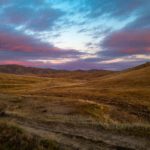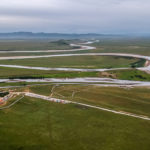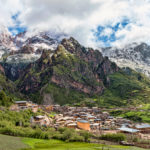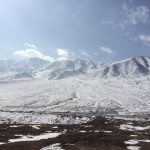MANASLU CIRCUIT TREK INFORMATION
The Manaslu Circuit trek is 175 km from start to finish and is usually completed with about 14 days of total trekking time (although it could be done in as little as 10 days or as many as 17 days depending on your pace, fitness level, and amount of time in Nepal). Of course do not forget to factor in the full 10 hour drive each way to and from Kathmandu that is in addition to the above trekking times. Most days of walking involve 6-8 hours of walking time and generally most trekkers walk around 15-20 km per day. There are teahouses usually every 5km along the trek though, so you can arrange your days to be shorter if you need more time to manage the steep trails and stone steps of the trek.
This trek is getting more and more popular as a new trekking destination but it still sees fewer trekkers compared to the established trekking routes in the Mount Everest and the Annapurna regions. This is a perfect trek for the intermediate and advanced trekkers who want fewer crowds and more rugged terrain while still walking a “teahouse trek” where all the food and lodging is completely provided. This means you do not have to carry your own tent, food, stoves, sleeping pad, or sleeping bag and can even carry loads as light as 10-15 pounds with just some warm clothes and snacks.
The circuit is a stunning trek with spectacular views of the 8th tallest mountain in the world, Mount Manaslu (8163 m) and the Ganesh Himal Range. Along the trail you encounter an interesting mix of authentic Hindu and Tibetan-style Buddhist villages and the trail walks right through these traditional stone house villages that provide an excellent cultural backdrop for the Himalayas. The trail follows the spectacular Budhi Gandaki River all the way from Arugath to its source just below the Larkya Pass- also spelled Larke Pass- at 5,125 m.
As you start the trek, at an elevation of 700 m you pass through lush jungle environments and over swinging hanging steel bridges that span class 6 rushing rivers and thick forests of ferns and giant trees. As you ascend through the trek you gradually acclimatize up through pine forests and then eventually cross the tree line at around 3,600 meters. Finally you spend your last days of ascent in the alpine zone and cross the high pass at 5,215 meters.
The crossing of the Larkya Pass (5125 m) (also spelled Larke Pass) can be tough because of the high altitude and here you will need to walk slowly to maintain your breath . Most trekkers spend about 80% of their trekking time slowly ascending over 8-10 days so that they can cross the pass. Then trekkers descend relatively fast losing 1,500 meters each day in a short two days. However, the stunning landscape with the mighty Himalayas towering straight above you and the spectacular glaciers make it more than worth the effort. The pass links the Budhi Gandaki with the Marsyangdi valley. The descent passes through beautiful alpine meadows at Bhimtang before joining the main Annapurna Circuit route heading to the trailhead at Besisahar. The Manaslu trek is easily accessible from Kathmandu. It originally started in the town of Arughat or Gorkha; however, with roads being built many trekkers start at either Barpak or Soti Khola a bit further up the trail.
The trek described here starts in Soti Khola and ends in Chyamche. It’s also possible to finish the walk in Besisahar which is also the starting point for the Annapurna circuit. The itinerary below is one of the many possibilities. The trek can be made longer or shorter depending on the length of your walking days and starting point. There are basic guesthouses all along the trail so you can choose if you want to camp or stay at the teahouses/guesthouses. You can combine the Manaslu Circuit with the Tsum Valley, a beautiful, secluded valley where century old Tibetan traditions prevail.
The 2015 earthquake had a big impact in the Manaslu region and destroyed several lodges along the trail. Reconstruction work for lodges and infrastructure (see our blog article about the new cantilever pathway) is moving forward rapidly and so finding accommodation shouldn’t be a problem as of autumn 2016. Camping is not necessary for this trek but may be an alternative for those traveling in big groups.







